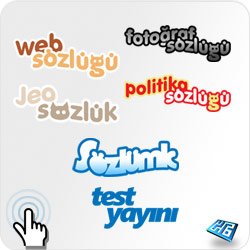tag cloud
Fotoğraf Sözlüğü (1)
ITP’12 - Day 3 (1)
ITP’12 Closing (1)
Jamais Contente (1)
Linux eğitimi (1)
Tıp Eğitiminde Örnek Uygulamalar Sempozyumu (1)
YH.sys (1)
Yerbilimleri Sözlüğü (1)
bilişim sözlüğü (1)
eğitim (2)
eğitimler (1)
gökmen karadağ (1)
gömülü sistemler (1)
haberaktif (1)
itp (1)
linux (2)
uteak (1)
yeni ticaret kanunu (1)
yh connect (1)
özgür yazılım (1)



Welcome to the Layer 8
Genel Koordinatör
I gave a try to write about market, needs, problems, intentions, biases and main headings in previous 3 posts. In this, I've used some sources for these approaches like; "Solution is not always a solution" and "If the problem is not defined and question is not modelled well, coming up with a solution would not be possible but there always must be a hope." Layer 8 may be meaningful now.
Problems and Deadlock
Determining a problem is essential of course but even solving a problem is often insufficient.
An Obvious Example
Camille Jenatzy has set a record by exceeding 100 km/h speed limit (105,882 km) with his electric car, Jamais Contente, at Acheres road in May 1, 1899. After 19. century, Electric has been claimed that it is an alternative energy source for cars by engineers.
We're still destroying the world through endustries that dependent to fossil fuels. So sometimes, solution is not a solution indeed. Only real solution is qualified human resource and it is most expensive and difficult to have, therefore you can't get things done at the end. Apparently there is no other way of thinking that some time is still needed.
Market and Sector
No matter how much we talk, we will come to the point of "There is a market but no sector" eventually. In other words, there is no league or federation that will put under the umbrella of local teams and leagues.
Customer and Endustry
Disturbed costumer is like a wounded tiger so he has no reliance anymore. Unfortunalety, the biggest barrier on the way of market to sector is this wounded customer. Because if there is no customer, no money will be generated and there will be no endustry without money undoubtly.
Current Events
According to a research: While there is no legal obligation, 2 million Turkish websites have been created. So the point shoud not be to rise the desire of creating website and controlling it, the point should be asked: "how can we create better websites and sustain them." Because there are some weird issues: For instance, a company that pays between 300 and 3000 TL for online advertising, does want to pay almost nothing for uptades of website or corporate content support. (It may not know that it needs to pay or it pretends like it does not know) Lets say it gets great reactions for the advert but what kind of website and contents will visitors come across? Are those websites accessable? There are even no answers for those quesitons.
Some examples from Theoretical-Political approach
“Dr. Richard Barbrook sees the high-tech gift economy as a process of overcoming of capitalism from the inside. The high-tech gift economy is a pioneeristic moment which transcends both the purism of the New Left do-it-yourself culture and the neo-liberalism of the free market ideologues: money-commodity and gift relations are not just in conflict with each other, but also co-exist in symbiosis"
*Tiziana Terranova, “Free Labor: Producing Culture For The Dijital Economy, Social Text 63, Vol. 18, No. 2, Summer 2000
David Pogue, technology writer and one of the famous Open Source Software supportive, was says in the critical over the lawyer Lawrance Lessig’s first book, Code: And Other Laws of Cyberspace
“Unlike actual law, Internet software has no capacity to punish. It doesn't affect people who aren't online (and only a tiny minority of the world population is). And if you don't like the Internet's system, you can always flip off the modem.”
Pogue was skeptical of the core argument of the book - that software, or "code," functioned as a kind of law - and his review suggested the happy thought that if life in cyberspace got bad, we could always "drizzle, drazzle, druzzle, drome"- like simply flip a switch and be back home. Turn off the modem, unplug the computer, and any troubles that exist in that space wouldn't "affect" us anymore.
Lessig was replying this approach in his Free Culture (http://www.free-culture.cc) book’s preface:
“Pogue might have been right in 1999 - I'm skeptical, but maybe. But even if he was right then, the point is not right now: Free Culture is about the troubles the Internet causes even after the modem is turned off. It is an argument about how the battles that now rage regarding life on-line have fundamentally affected "people who aren't online." There is no switch that will insulate us from the Internet's effect”
Tiziana Terranova reflects an essential approach related to our topic: “We can start undoing this deadlock by subtracting the label digitaleconomyfrom its exclusive anchorage within advanced forms of labor (wecan start then by depioneering it). This essay describes the digital economy as a specific mechanism of internal “capture” of larger pools of socialand cultural knowledge. The digital economy is an important area ofexperimentation with value and free cultural/affective labor. It is aboutspecific forms of production (Web design, multimedia production, digitalservices, and so on), but is also about forms of labor we do not immediately recognize as such: chat, real-life stories, mailing lists, amateurnewsletters, and so on. These types of cultural and technical labor are notproduced by capitalism in any direct, cause-and-effect fashion; that is,they have not developed simply as an answer to the economic needs ofcapital. However, they have developed in relation to the expansion of thecultural industries and are part of a process of economic experimentationwith the creation of monetary value out of knowledge/culture/affect.”
*Tiziana Terranova, “Free Labor: Producing Culture For The Dijital Economy, Social Text 63, Vol. 18, No. 2, Summer 2000
OSI Model
In 1984, International Organization for Standardization (ISO) developed the Open Systems Interconnection (OSI) model.
OSI Model defines the different stages that data must go through to travel from one device to another over a network.
OSI Model defines the approach with a set of 7 layers:
Layer 7 – Application Layer
Layer 6 – Presentation Layer
Layer 5 – Session Layer
Layer 4 – Transport Layer
Layer 3 – Network Layer
Layer 2 – Data Link Layer
Layer 1 – Physical Layer
Layer 8
Information and network technologies has 7-layered architecture in terms of standarts. Now, Layer 8 is about to be formed. Space between computer screen and user is Layer 8. Technical engineering finishes its job when data/information appears in screen, this is Layer 7, also know as Application Layer, so Internet. After that is a brand new world: New space that may include social media but may not just be restricted with it, Layer 8.